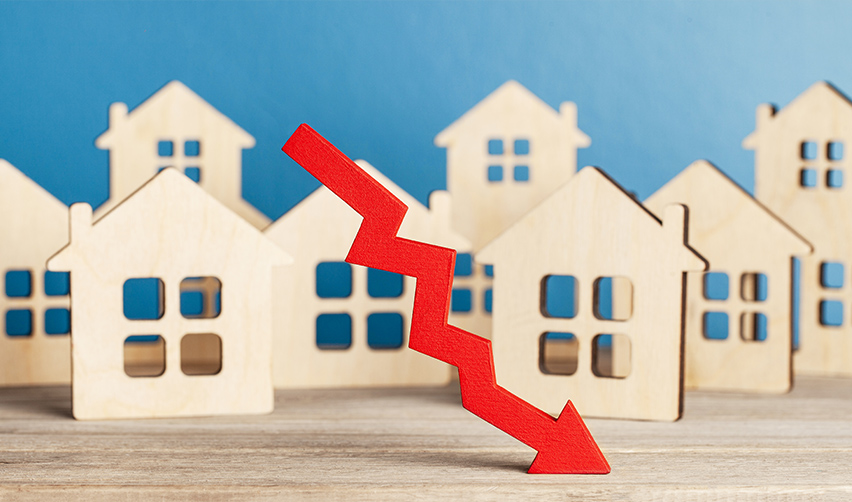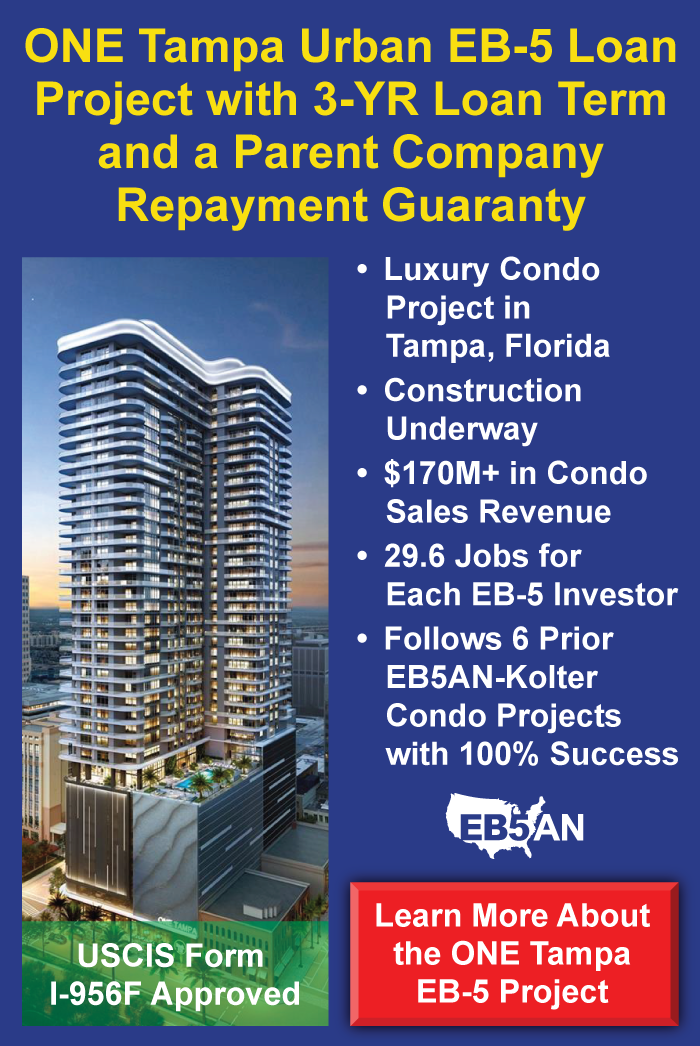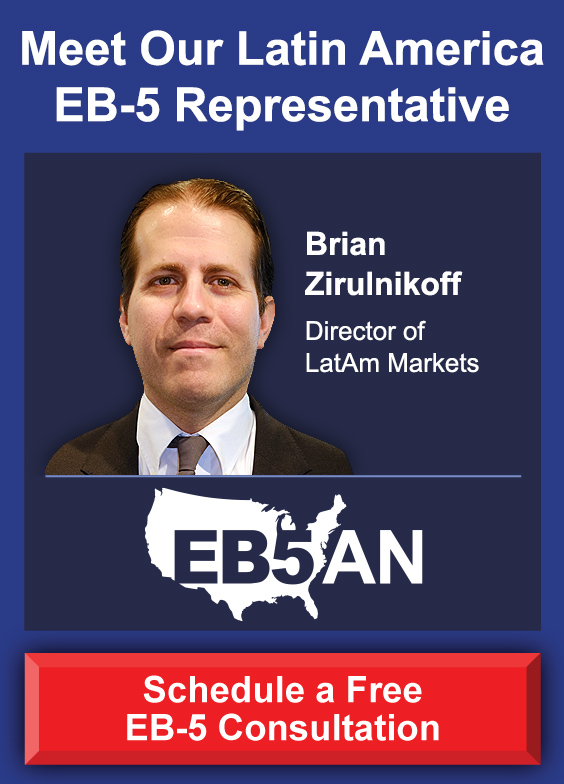If you have made an EB-5 investment in a real estate project—or plan on doing so—you likely want to recover your funds in addition to receiving U.S. Green Cards.
However, EB-5 applicants are required to invest with no contractual rights to repayment or similar guarantees. EB-5 funding must be fully at risk, with the potential for financial losses or gains.
Therefore, your chances of being repaid mostly depend on your EB-5 project’s financial performance—its ability to generate revenue and repay its debts.
If you invest in an EB-5 project with a strong balance sheet, you will be much more likely to recover your funds. Many EB-5 investors have successfully recovered all of their capital as well as obtained U.S. Green Cards.
But if you invest in an EB-5 project that fails financially and is unable to repay its debt, you could potentially lose every cent of your $800,000 investment.
To avoid losing your funds, the key is to (1) invest in a low-risk real estate sector and (2) choose a project located in an area with a strong real estate market.
Generally, the riskiest real estate sectors depend on future projections of demand, rental revenue, and similar assumptions. These projects can only estimate what their future revenue—if any—will be.
Location also plays an important role. If the trends in an area’s real estate market reveal falling prices and demand, projects in that area are much more likely to fail.
Current trends in the real estate market show that build-to-rent developments, such as apartment projects, face an increasingly high risk of foreclosure in several urban areas of the United States.
This risk is most evident in the California Bay Area, particularly Oakland.
With plummeting rental prices and a declining local economy, apartment projects in Oakland pose a significant financial risk for EB-5 investors.
In this article, we examine the risks involved in build-to-rent apartment projects. We then provide an overview of recent real estate trends in Oakland.
Finally, we explain the steps EB-5 investors can take to identify high-risk projects and protect their funds.
Risks of EB-5 Apartment Projects: Uncertain Rental Prices, Uncertain Cash Flow
Apartment Rental Prices Are Plummeting in Oakland
Downton Oakland Poses the Highest Risk for Apartment Projects
Apartment Tower in Downtown Oakland Forecloses
1700 Broadway Street Building Forecloses; Other Downtown Oakland Buildings Face Falling Rents
Map of Developments in Downtown Oakland
How to Identify Risks in EB-5 Apartment Projects: Ask These Questions
Protecting Your EB-5 Funds
Further Reading
Risks of EB-5 Apartment Projects: Uncertain Rental Prices, Uncertain Cash Flow
When an apartment project’s rental prices turn out to be lower than projected, there may not be enough cash flow for the project to repay its debts. In this scenario, the entire project may be at risk of foreclosure, and the investors may lose their funds.
Developers often base their financial models on optimistic rental income estimates, anticipating strong demand and steady or increasing market rates. However, if actual rental prices are lower, the revenue may not be enough to cover operating expenses and repay investors.
Apartment projects that began development before the COVID-19 pandemic and recently completed construction pose a particularly high risk. At that time, the build-to-rent market in many urban areas was growing, and developers expected continued growth in rental prices.
The COVID-19 pandemic dramatically altered the real estate landscape. Economic uncertainty, the rise of remote work, and a widespread shift away from urban areas significantly lowered rental prices in many cities.
Because of these shifts in real estate, many apartment projects that relied on pre-pandemic assumptions are now facing rental incomes that are only a fraction of their predictions.
An apartment project with lower rental prices may not be able to deliver its full interest payments or principal repayments on time, triggering the default clauses in its loan agreements. Even if the developer tries to renegotiate loan terms or raise more funds, it can be difficult for a project in financial distress to gain access to these options. The developer may ultimately be forced to foreclose and lose the property.
In this situation, every lender in the project may lose all or part of their capital. And EB-5 investors will likely face the highest risk.
EB-5 investors are often at the lowest level of a project’s repayment priority. If a project has a shortfall of capital, the senior lenders are repaid first, followed by mezzanine lenders and other subordinated debt holders.
EB-5 investors are usually considered equity participants or hold subordinated debt, placing them last in line or close to last in line for repayment. Therefore, if an apartment project’s rental revenue is lower than expected and the project cannot meet its debt obligations, the funds may only be enough to repay higher-priority lenders, like banks.
An EB-5 investor in this situation may lose every cent of his $800,000 investment. No matter what guaranties or claims a project makes, EB-5 investors are unlikely to be repaid if the project fails financially.
Many urban areas in the United States currently face falling rental prices, making apartment projects in these locations particularly risky.
Oakland is a noteworthy example. Apartment projects in the city currently face a “perfect storm” of plummeting rental rates driven by economic decline, a dwindling population, and worsening crime.
Apartment Rental Prices Are Plummeting in Oakland
Rental prices are falling more steeply and more quickly in Oakland than in any other city in the United States.
Even though apartment rental rates have declined in 9 of 16 large cities in California, Oakland leads with an 8% year-on-year decline in August 2024, according to an ApartmentList report.
The report gathered rental data from the 100 largest U.S. cities and found that Oakland’s rent prices dropped the most.
The data also shows that the median asking rent for a one-bedroom apartment in Oakland in January 2019 was approximately $2,400 a month. This rate dropped to $1,800 in April 2024.
A May 2024 report by the San Francisco Chronicle explains that “[Oakland’s] median asking rent has tumbled since the pandemic began”.
Additionally, Oakland leads California cities in apartment vacancy rates, which stood at more than 9% as of April 2024.
Making matters even more precarious for build-to-rent projects in Oakland, the city also has a 2.3% rent cap.
A rent cap limits how much rent can be raised for existing tenants in rent-controlled apartment buildings, allowing for only a 2.3% increase annually. It aims to protect tenants from steep rent hikes.
The owner of an Oakland rental brokerage explains the risks that rent caps create for developers: “If you have a place that’s rented for $2,400 and you say we aren’t finding anybody and you just drop it, it will take you years to recover because you can only incrementally raise it unless it’s a single-family home or new construction.”
This means that most apartment buildings in Oakland do not have the freedom to raise rental rates as required to meet their financial goals. If they do not quickly find tenants for each unit, it may take years to recover the financial losses. In the meantime, the developer may be unable to repay its senior debt on time and be forced to foreclose.
Downton Oakland Poses the Highest Risk for Apartment Projects
The Chronicle also stresses that downtown Oakland is seeing the steepest drop in rental prices.
According to Rob Warnock, a researcher at ApartmentList, the city’s largest build-to-rent developments are concentrated in the downtown area. This means that Oakland’s rental data, which shows declining rental rates, most accurately reflects trends in the downtown market.
Zillow, a leading real estate marketplace, estimates that Oakland’s downtown and adjacent neighborhoods saw a 10% decline in rental prices from 2023 to 2024.
Facing dwindling demand, many developers in the downtown seem to be lowering rental rates to rent out their long-vacant properties.
“With no indication that this trend will reverse,” stated another researcher at ApartmentList, “some developers may not want to build in downtown Oakland.”
It’s certainly true that developers—and EB-5 investors—should think twice before committing to build-to-rent projects in downtown Oakland. Falling rental prices are causing a wave of foreclosures in build-to-rent projects across the city, especially in new, high-rise apartment towers.
Apartment Tower in Downtown Oakland Forecloses
One recent example is a high-rise apartment tower at 1700 Webster Street. According to SiliconValley.com, the building was seized by its lender in August 2024 due to failure to repay debt commitments on time.
The developer had secured a $90 million loan in 2020. When the foreclose took place in August 2024, the loan had an unpaid balance of $89.8 million—meaning the developer had only managed to repay around $200,000.
This apartment building began construction before the COVID-19 pandemic and was completed in 2019. It features the following:
- Modern apartments.
- Resort-style amenities include a roof deck pool, an indoor and outdoor lounge, a lobby with outdoor access, and a boutique fitness center.
- Located only two blocks away from the 19th Street BART subway station on Broadway Street.
- Developed by a nationally recognized builder.
Despite these attractive characteristics, this development was still forced to foreclose, another victim of Oakland’s stagnant rental market.
Consider yet another high-profile foreclosure in downtown Oakland.
1700 Broadway Street Building Forecloses; Other Downtown Oakland Buildings Face Falling Rents
An office building at 1700 Broadway Street foreclosed in June 2024 according to the San Francisco Business Times. In July, the building was sold for only $2.75 million.
It had originally been purchased for $13.3 million in 2017, meaning that its value fell approximately 80% over the last 7 years. Previously, no buyer had come forward to buy the 1700 Broadway development at a public property auction.
This building features 10 stories and 31,500 square feet of office space.
Like 1700 Webster Street, 1700 Broadway is also located only two blocks from the 19th Street BART subway station.
Further, the Chronicle report shows that a residential building—just across the street from 1700 Broadway—is also experiencing falling prices.
17th and Broadway, another apartment tower, asked for $2,740 a month for a one-bedroom apartment in September 2020. In May 2024, a similar unit was listed at $2,480.
Reflecting the widespread dissatisfaction with Oakland’s rental market, a resident of 17th and Broadway said the following: “When the rent is still relatively expensive… it does make you think about going somewhere else.”
Unfortunately, it doesn’t end with these examples of foreclosures and falling rents.
According to the Chronicle, yet another apartment complex at 500 William St offered a one-bedroom, 650-square-foot rental for $2,310 a month in 2020. In May 2024, a similar apartment was listed at only $1,920. This represents a decrease of 16.8%.
What is more, the apartment was offered with “10 weeks of free rent and a one-time $1,000 discount.”
Interestingly, this building is only one block away from the 19th Street Bart subway station.
With a high concentration of foreclosures and properties experiencing falling rental prices, it seems that this particular area in downtown Oakland creates an exceptionally high financial risk for EB-5 investors.
Map of Developments in Downtown Oakland
This map shows the locations (in red) of the four developments mentioned above: 1700 Broadway, 17th and Broadway, 1500 William Street, and 1700 Webster Street. The map also shows other downtown Oakland landmarks, such as the 19th Street BART subway station on Broadway Street.
How to Identify Risks in EB-5 Apartment Projects: Ask These Questions
Whether you’re planning your EB-5 investment or have already invested, it’s crucial to find out an EB-5 apartment project’s rental revenue and overall financial situation.
We recommend asking for the project’s rent roll, which discloses the property’s income and the rent paid by each tenant. Ask whether the rental income is lower than projected.
A project’s financial statements provide a helpful overview of its business success, or lack thereof. For non-EB-5 projects, any experienced investor would ask to see a project’s financial statements before committing his funds.
As an EB-5 investor, you deserve—and should expect—projects to be transparent and share key documents, including financial statements. If an EB-5 project is unwilling to share its rent roll or financial statements, this is a major red flag. It may indicate that the project is trying to hide a shortfall of capital.
If so, your entire invested funds may be at risk.
And when you receive any information—regarding a project’s finances, EB-5 processing statistics, or other topics—don’t be afraid to ask about the source of the data to make sure it’s up-to-date, unbiased, and complete.
If an EB-5 firm is trustworthy and values transparency, it will be willing to answer investors’ questions and justify any information they provide. Instead of simply assuming that any data is correct, take the time to verify it yourself.
Doing so may mean the difference between receiving U.S. Green Cards and recovering your investment, or losing out on both goals.
Protecting Your EB-5 Funds
Your success as an EB-5 investor largely depends on doing research and asking the right questions. You have the right to know a project’s financial standing before—and after—you invest.
Remember, the EB-5 program requires funds to be at risk. Unless you choose a financially strong project, you could potentially lose every cent of your $800,000 investment.
We encourage you to approach selecting an EB-5 project like an experienced real estate investor. Look for low-risk real estate sectors and areas with a strong real estate market.
The Chronicle article mentioned above quotes an apartment developer describing Oakland as “‘perhaps one of the worst submarkets in terms of rental revenue.’” Any investors considering a rental project in Oakland would certainly benefit from examining the city’s real estate situation more carefully.
For more information on how to make a safe EB-5 investment, schedule a free consultation with EB5AN.
Further Reading
- Bill of Rights—10 Rights Every EB-5 Investor Should Have
- Financial Statements—Review Before Investing
- Oakland rent prices see steep declines, driven by this neighborhood
- Bay Area exodus: Poll finds nearly half of residents want to leave region’s challenges behind
- They decided to leave the Bay Area and never looked back









